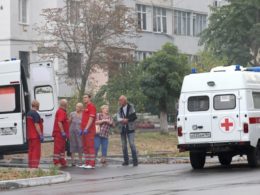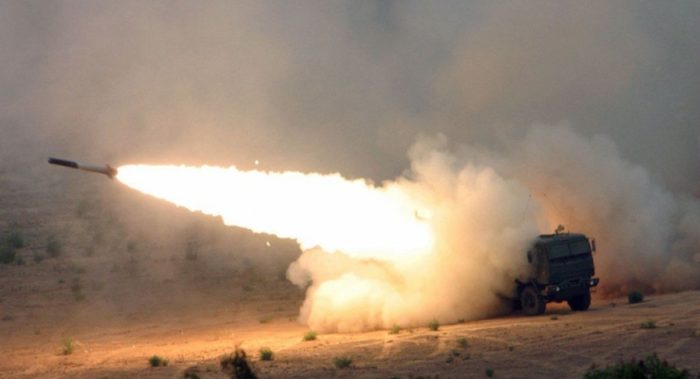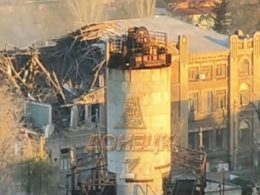In a revealing interview with Radio Liberty’s Donbas.Realities project, Commander of Ukraine’s Unmanned Systems Forces (USF) Vadym Sukharevsky highlighted significant achievements in drone warfare, noting that Russian reconnaissance drone activity has decreased “by dozens of times” compared to previous levels.
Dramatic impact on Russian air reconnaissance
The transformation has been particularly striking in tactical situations. Sukharevsky recalled that in the past, specifically in the Kherson direction, Russian forces could deploy up to 40 fixed-wing drones simultaneously within a 50×50 kilometer area. In 2022, the presence of seven Orlan drones supporting Russian artillery divisions could effectively paralyze Ukrainian movements for up to 11 hours. Now, according to Sukharevsky, such numbers are no longer seen, with Ukrainian forces actively hunting and eliminating Russian reconnaissance drones as they appear.
This effect was achieved due to the introduction of new air defense capabilities using FPV drones to hunt down slow targets such as reconnaissance drones. In particular, the massive introduction of the new air defense capabilities was enabled after Ukraine launched Unmanned Systems Forces (USF) as a separate branch of its Armed Forces in 2024.
Deep strike capabilities
The USF has demonstrated impressive reach into Russian territory. Sukharevsky revealed that Ukrainian forces have conducted over 220 deep strike operations inside Russia in 2024 alone, launching more than 3,500 unmanned systems. Their confirmed operational range now extends to 2,000 kilometers, marking a significant strategic capability.
The commander noted that in 2025, Ukraine will meet the target set by President Zelenskyy to increase the intensity of deep strikes into Russian territory dramatically.
Other notable achievements include an increased range of Ukrainian drones striking enemy targets on the frontline.
For example, the “Baba Yaga” drone bomber successfully struck a Russian Buk-M3 air defense system 57 kilometers behind enemy lines. The Nemesis UAV regiment destroyed more than 15 expensive air defense systems, including Buk-M3 and Tor complexes, in just two months. FPV drones successfully engage targets up to 34 kilometers behind enemy lines.
Technological innovation and future development
The commander emphasized Ukraine’s role in revolutionizing modern warfare, particularly in maritime operations. He highlighted the unprecedented success in using unmanned systems to challenge Russia’s Black Sea Fleet, comparing it to historical naval victories of significantly outmatched forces.
In particular, Sukharevskyi noted the recent case of Ukrainian maritime drones equipped with air defense systems targeting Russian helicopters. Looking forward, he noted active work on laser technology for countering enemy drones and Shahed attacks and integration of unmanned systems in both defensive and offensive maritime operations.
Personnel quality and recruitment
The USF has achieved remarkable success in recruitment, maintaining a highly educated force with unique demographics:
- Average age of recruits is 34 years, which is the lowest among all Armed Forces branches
- Over 80% of personnel have higher education
- Approximately 30% hold two or more university degrees
Strategic Implications
Sukharevsky stressed that Ukraine’s drone warfare capabilities represent more than just tactical advantages — they offer potential economic opportunities for post-war development. He envisions Ukraine transitioning from an agricultural hub to a technological powerhouse, leveraging its unique wartime experience in unmanned systems.
The commander also addressed current challenges, including the threat of fiber optic-guided FPV drones, noting that Ukrainian forces have identified several types of possible countermeasures against these drones, which he didn’t specify. He also emphasized the need for diplomatic efforts to restrict Russia’s access to optical fiber components.
While acknowledging the current difficulties, particularly around Pokrovsk, Sukharevsky maintains a resolute stance on Ukraine’s position as a “fortpost between good and evil, between civilization and barbarism.“ He stressed that while Ukraine has already achieved a strategic victory by maintaining its independence despite initial Russian objectives, the war requires continued national mobilization and support across all sectors of society.
The dramatic reduction in Russian reconnaissance drone activities and the increase in effective Ukraine’s strikes on Russian soil represent a tangible strategic success.
Related:
- Forbes: Ukrainian “lurk-and-strike” FPV drones execute high-profile assassinations behind Russian lines
- Ukrainians push Russians back from forward positions near Borova in Kharkiv oblast
- British 18-year-old man dies in Ukraine due to Russian drone attack on first combat mission
- UN monitors report “alarming rise” in Russian executions of Ukrainian POWs






